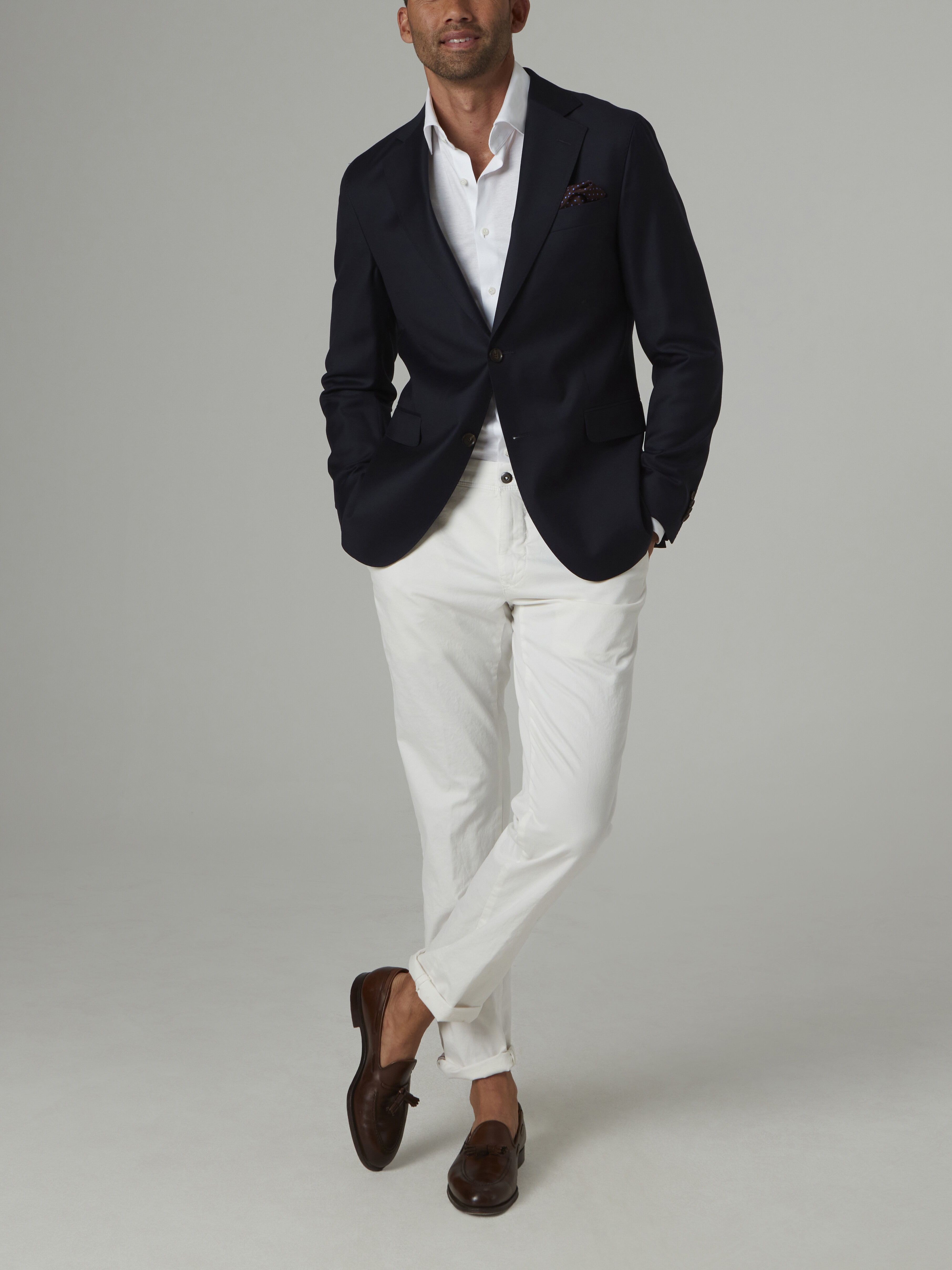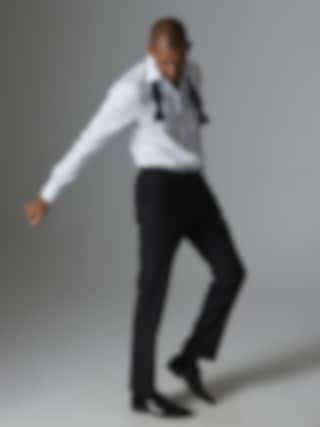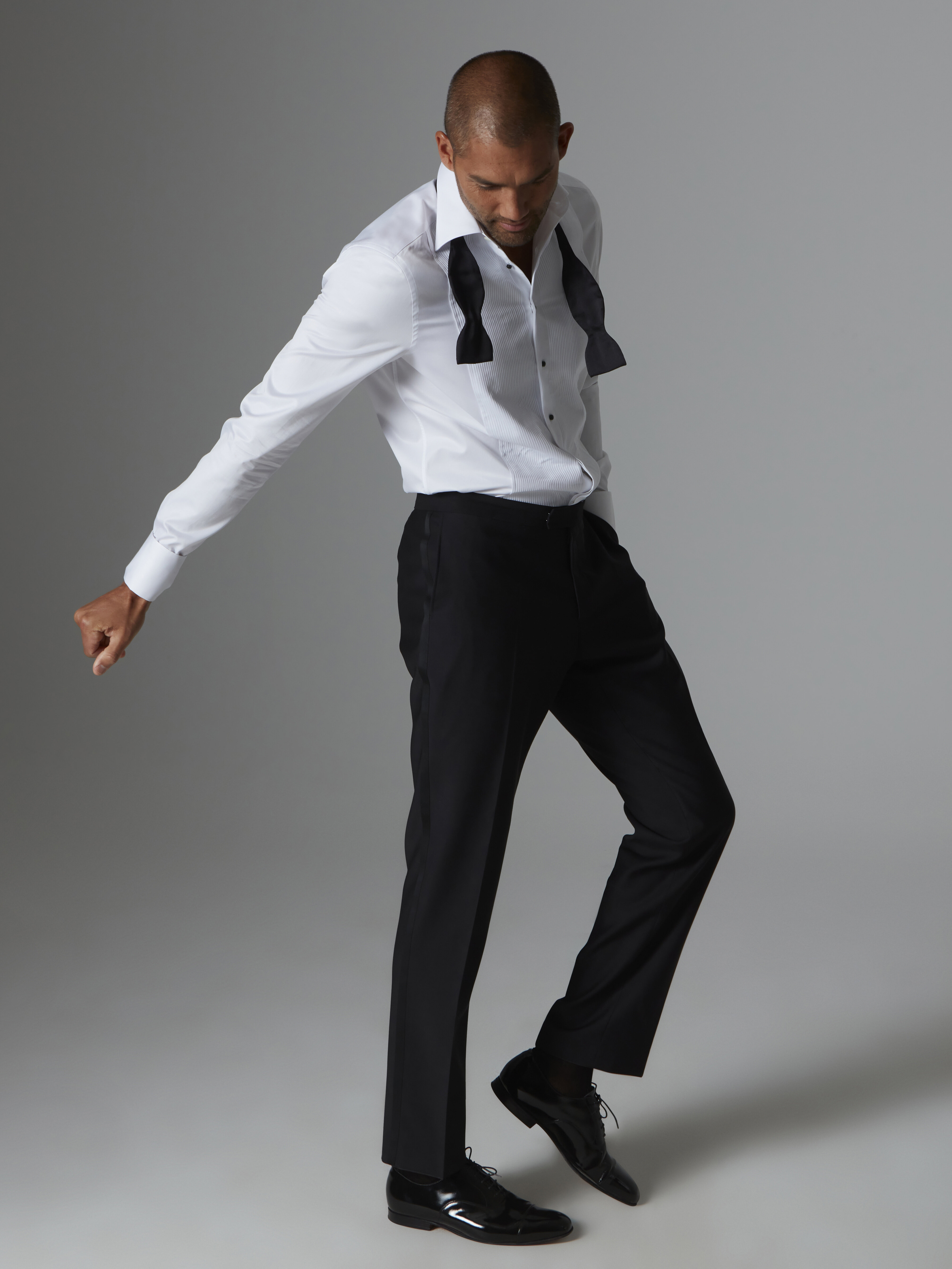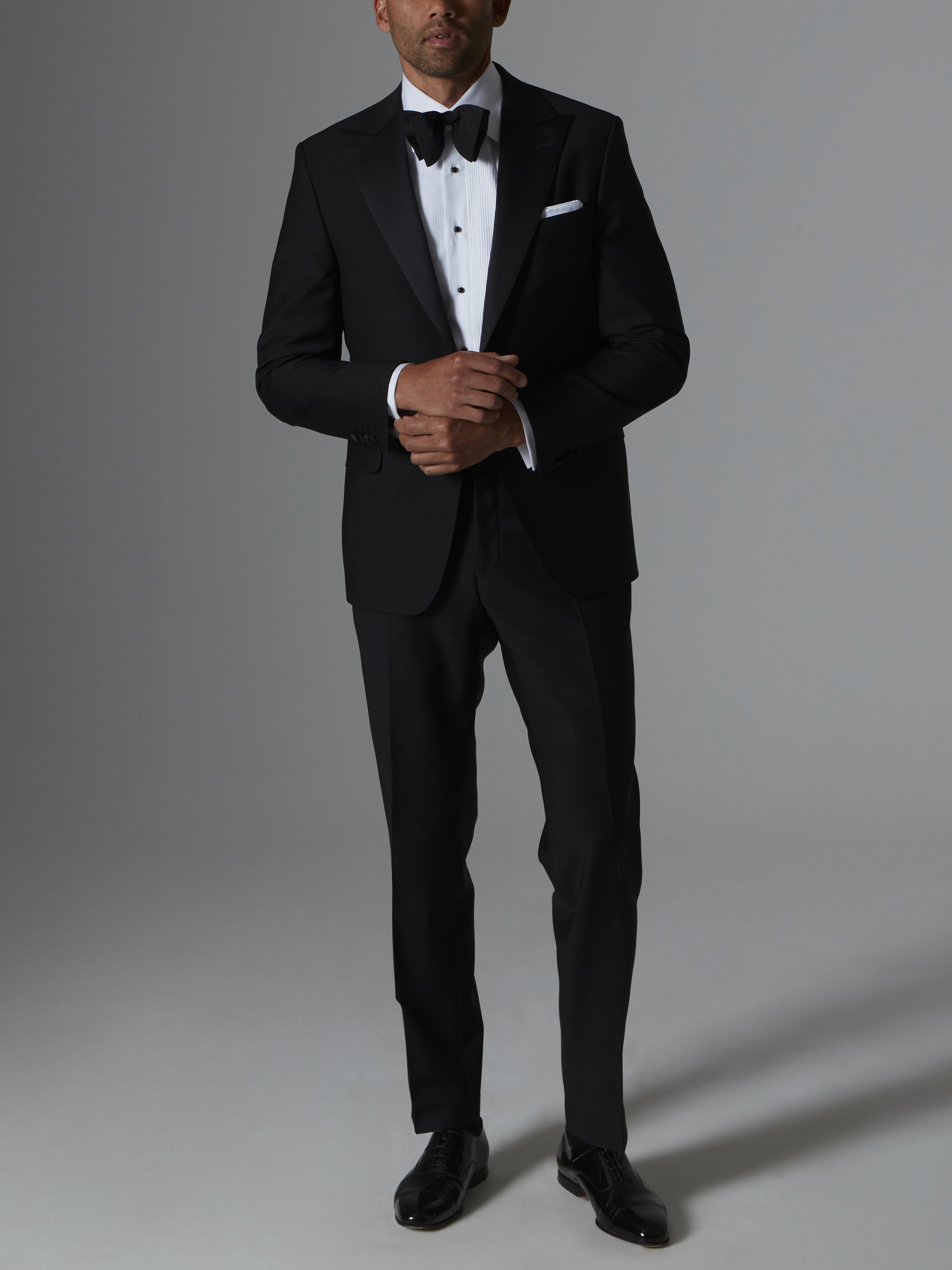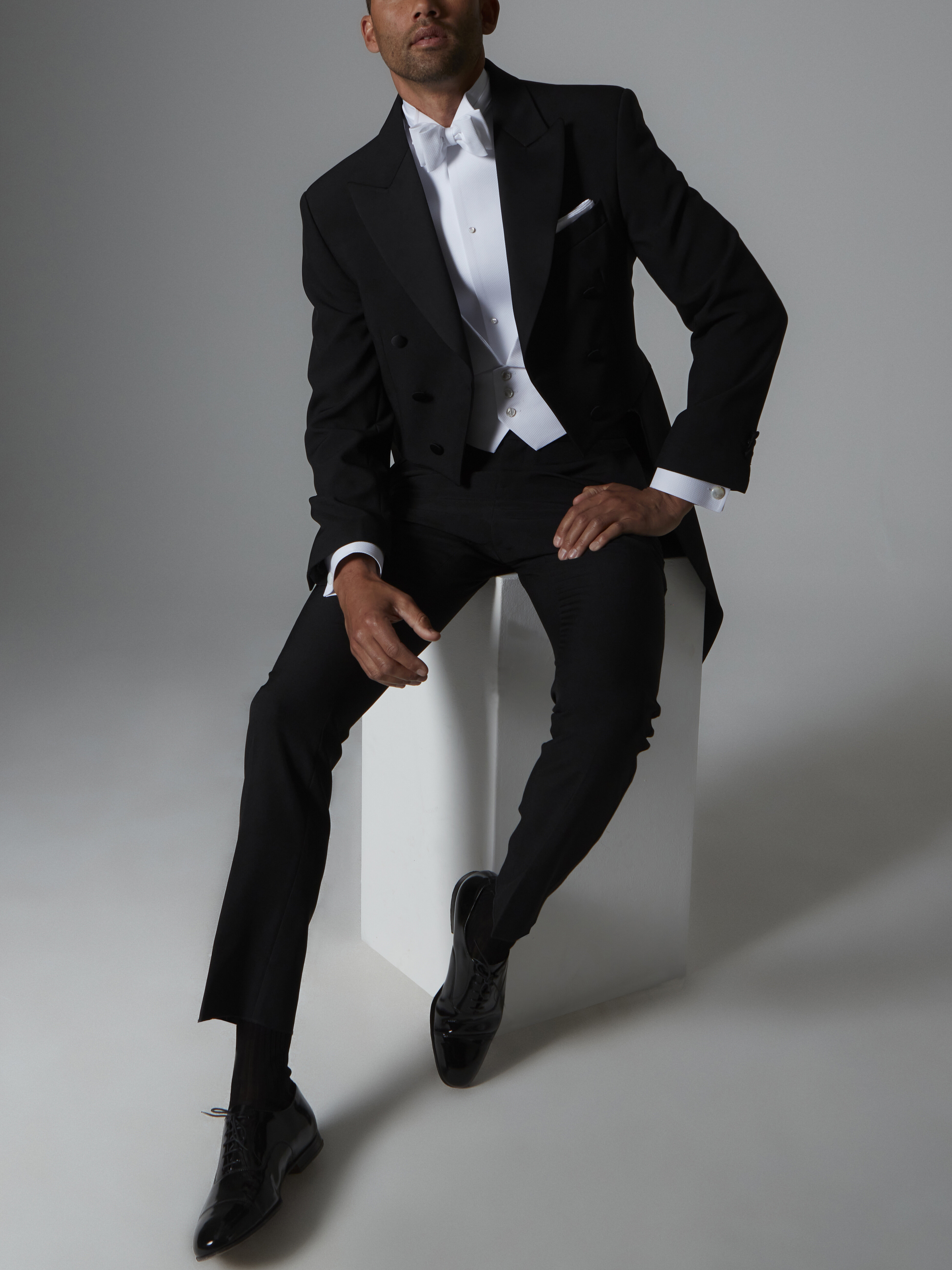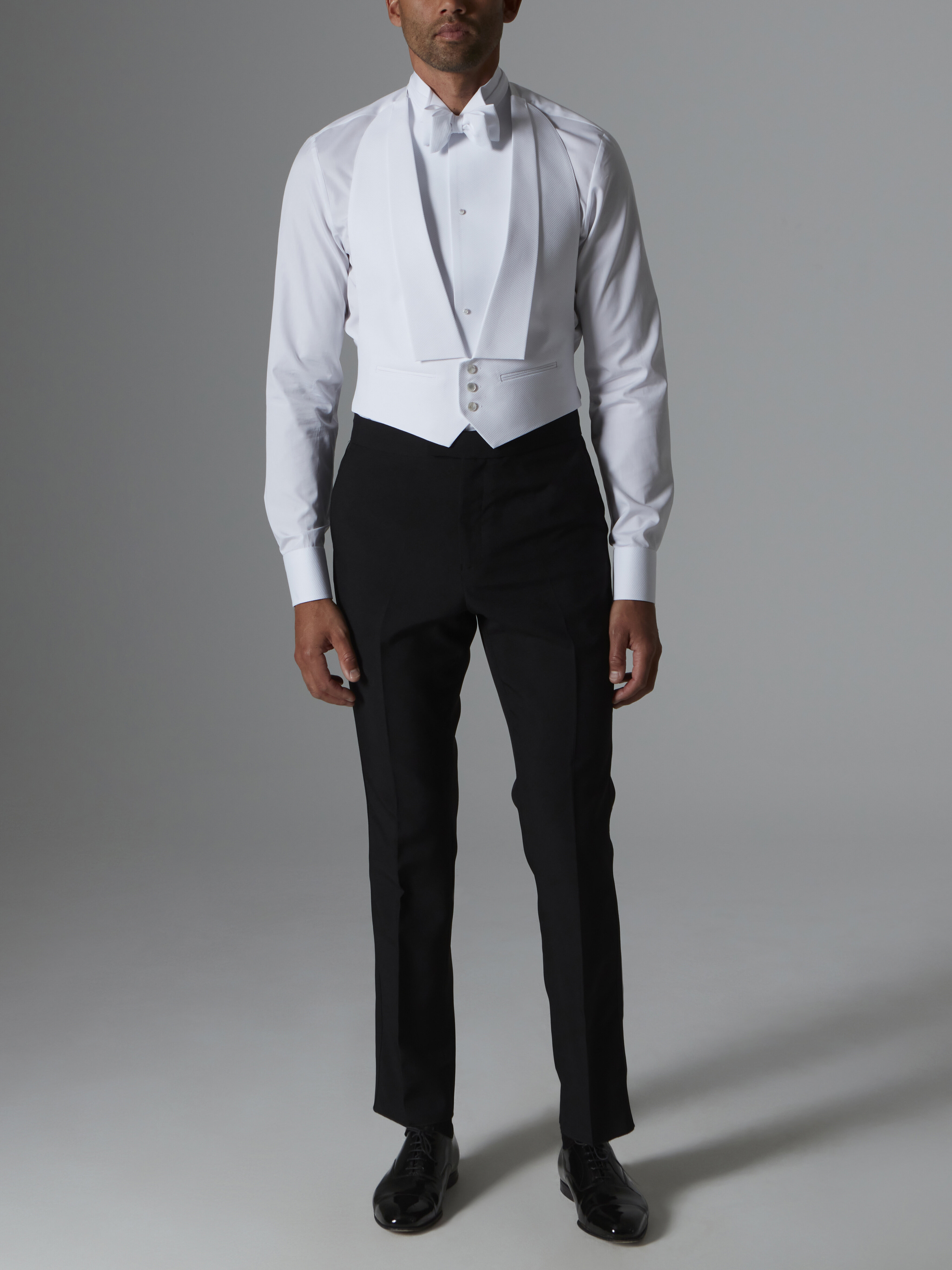Country & Language
Free shipping
Dress codes
If your invitation specifies a dress code, it is good to know exactly what it means before you start planning your outfit. By honoring the dress code, you are showing respect to the host.
Some may say that dress codes aren’t as strict these days, but that may depend on who the hosts are and the occasion. Here are some of the classic dress codes you can encounter on the invitation to weddings and other more formal parties.
Blazer/suit
When the English or the Americans invite to a party, they write "business casual" when they mean the dress code “blazer/suit”. Traditionally, this means you should wear a dark blue, dark gray or black suit. It can be single- or double-breasted and preferably plain, but the fabric can also have discreet/thin stripes. If you are the type who likes a vest with your suit, you can complement it with one, particularly on festive occasions.
The shirt, which can have both a classic collar or a cutaway collar, should preferably be white, but a light blue or off-white can also work. If you want to feel extra special, choose a shirt with French cuffs and use your favorite cufflinks.
With the suit, you should wear a classic plain tie and pocket square, or they should both have a discreet pattern. Black socks and black lace-up shoes with thin leather soles will complete your look.
Today it´s also common for invitations to say, "smart casual". As a guideline, keep in mind that the darker the suit, the more formal you will look. A suit for the "smart casual" invitation can be a linen suit in, dark blue or sand/beige for example. With the suit you can wear a light shirt and a tie with a handkerchief if you desire. If you choose a linen shirt, you can skip the tie, but feel free to add a handkerchief in a color that complements the suit. Here you also have the option of choosing either black or brown shoes.
If you are not sure how you should be dressed, it can be good to coordinate with the host and adapt your outfit. Also think about the season and location and then adapt your outfit accordingly, and you will both feel more comfortable and appear more thoughtful and stylish.
Odd jacket/blazer or separates
If your invitation says, “odd jacket/blazer” or “separates”, it means the least formal attire, i.e. with an odd jacket you mean that the jacket and trousers are of different color and probably different material. With such a dress code, it is usual to wear a navy-blue blazer and a pair of light trousers in grey, white or beige of a finer quality.
The shirt can be plain in white, blue or off-white, but also patterned works as, for example, a striped shirt. A classic collar or button down is stylish, and you can wear a tie if you like. Add a pocket square if you feel like it.
Events with this dress code usually take place during the day and can be something like a lunch invitation for a larger group.
Tuxedo or black tie
The tuxedo is the usual party attire for many occasions and has also become more common to use at weddings, even in Sweden. The tuxedo is available in several variants such as single-breasted, double-breasted and with or without silk lapels on the trousers. The color is usually black or dark blue, but if you want to be really daring, you can wear a tuxedo in a strong color. The material can be thin wool with a matte finish or fine velvet. A wool tuxedo can also have velvet-covered strokes.
The tuxedo shirt can either have a classic, slightly pointed collar or a wing collar. The shirt must always have French cuffs with room for stylish cufflinks. The shirt chest can be plain or have a pleated front, and either concealed buttoning across the chest or space for visible studs that you fasten to the chest. According to older traditions and etiquette, you should wear a black or dark blue bow tie, but nowadays other colors and patterns are used and as an option you can add a cummerbund in a matching color or pattern.
You should also put a white pocket square with a straight edge in your breast pocket. Black socks and stylish patent leather shoes or so-called opera pumps, which are a classic and elegant type of shoe for more festive occasions, are also a must. A nicer "suit wristwatch" works fine for a tuxedo occasion, but leave the big, sportier wristwatch at home. For the black tie/tuxedo event, your female companion should either wear a long or shorter party dress.
White tie
White tie events are usually very formal. The white tie coat consists of a jacket with a long tail at the back and trousers with lapels. With the coat, you wear a white shirt with a wing collar. The shirt can be plain or have a starched chest in cotton pique. In the shirt chest, which has open buttonholes on both sides, you put in nice breast buttons that can be made of material such as light mother-of-pearl.
The shirt has simple, starched cuffs where cufflinks are used, preferably of light mother-of-pearl - they must never be dark. A white waistcoat or cummerbund is worn over the shirt. Some believe that the coat's white vest or belt should be visible, others not. Some people think it looks better if a couple of centimeters are visible and break the all-black impression. The choice is yours.
One also wears a white bow tie and a white handkerchief, which should only be seen as a narrow stripe in the breast pocket. Black socks and black patent leather shoes are of course a must. Don't forget to take off the wristwatch - or replace it with a pocket watch to keep in the inside pocket of the coat.







